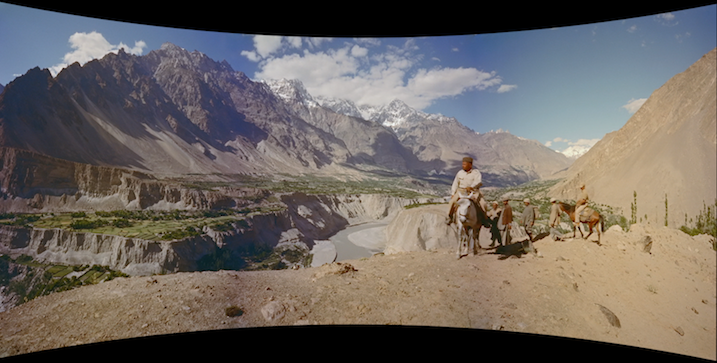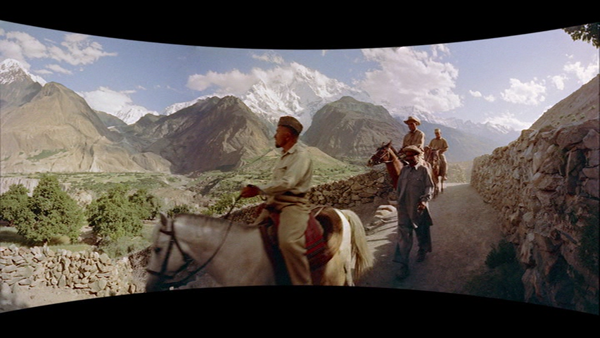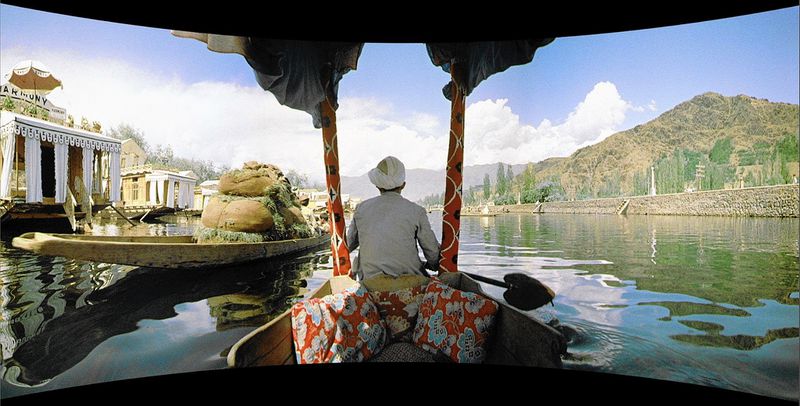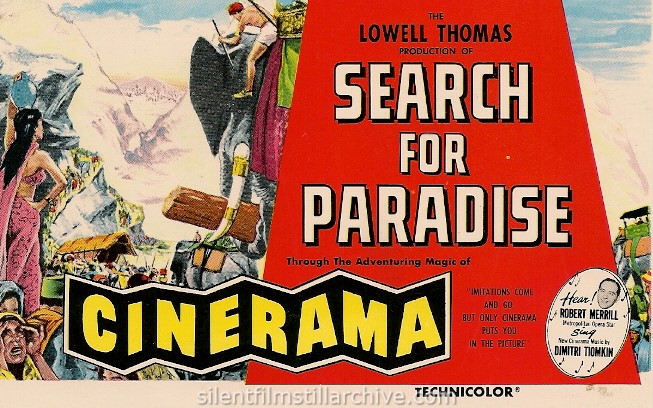This is the third Lowell Thomas Cinerama presentation
that I have seen on DVD from SmileBox. The prints were beautifully restored
and are just immaculate. In case you are not familiar with Cinerama, it was
a new filming technology created in the 1950's to give the audience an incredible
widescreen experience using three panels. The format went generally from
1:33 to 2.76. But there were issues with filming and presenting in Cinerama.
The camera was extremely heavy, had three lenses going, had no zoom capability
so every shot needed a new set-up and the camera gave a loud buzz so that
the sound had to be recorded separately. And then in terms of presenting
it, theaters had to be refitted with a curved screen and three projection
cameras - and five projectionists. It was economically a tough sell. When
Panavision came along in 1962 with a similar widescreen presentation, Cinerama
was wound down. But these guys have been restoring them and creating a three
panel effect on your TV. The bigger your TV, the better the experience.

Lowell Thomas was a famous TV personality back then for his TV travelogues
that were from all over the world. So he became involved with these as well.
The first two I saw This is Cinerama and The Seven Wonders of the World were
much more varied than this one ended up being. As a supplement explains logistics
narrowed their options - such as going to Tibet (Mao said no), areas on the
Indian-Pakistani border (India said no) and Africa (not enough time). As
interesting as the end film is just how difficult it was to make it. The
theme in the film is finding paradise, Shangri-La - and off they go to Ceylon,
Kashmir, Pakistan (Hunza), into the Himalayas and into Nepal. The photography
is stunning, in particular when they get into the mountain regions.

They did make a few puzzling choices to me. A conceit is that two USA airmen
are on vacation and go along with them looking for their own paradise. Conceit
because they are actors and it adds nothing. Tragically, one of them dies
on the rapids and that is why he is off elsewhere for certain shots. Lowell
also decided to have the great Robert Merrill sings a few ditties at times
on the soundtrack but they are completely disconnected from the film - such
as in Kashmir when they are on a House Boat he sings a song with a Calypso
beat. Why not go to the extra trouble and add some local music to the scenes.
The music is composed by Dmitri Tiomkin and in some films it would be fine
but sounded way too bombastic for this one. A part of me wanted to put the
sound on mute - Lowell's narration is just corny today - and put on my own
music. But I love these old travelogue films - love old news reels - old
movies - old newspapers - just to see what the world was once like. In films
like this a world is recorded in spectacular color that is long gone.





